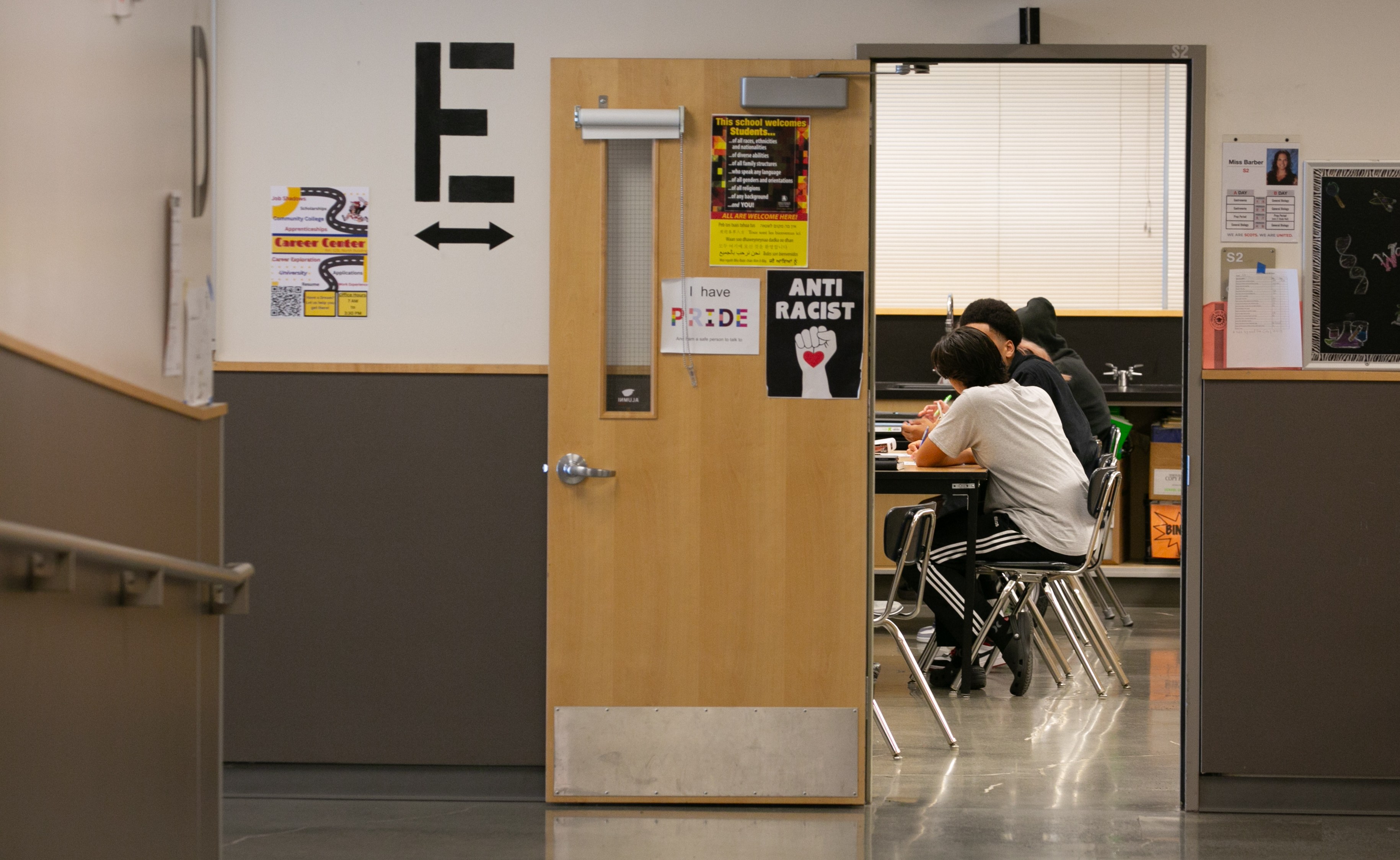
FILE - Students sitting inside a classroom at David Douglas High School in Portland on Sept. 6, 2023. A new report Oregon ranks middle among states for child well-being.
Caden Perry / OPB
Oregon kids are healthier than average but lag behind their peers nationwide when it comes to education, according to a new report.
The Baltimore-based Annie E. Casey Foundation releases annually a report called KIDS COUNT that ranks how well states support kids using state and federal data. The latest report, the foundation’s 35th, was released last week and includes data collected in 2021 and 2022. It shows Oregon is in the middle among states for overall child well-being.
Although Oregon is in the top 25% of states for supporting child health — as measured by health insurance coverage, birth weight, childhood death and obesity rates — the state ranks near the bottom in education, at 43rd among the 50 states.
In Oregon, nearly three-quarters of fourth graders were not considered proficient readers in 2022, up 6% from pre-COVID pandemic levels in 2019, according to the report. Nearly 80% of eighth graders were not considered proficient in math, a 10% increase from pre-pandemic levels in 2019.
The pandemic also drove a 10% increase in chronic absenteeism since 2020. According to the report, about 40% of Oregon students were chronically absent in 2022, meaning they missed 10%, or 16 or more days, of school during the year.
Declining proficiency in key subject areas and increases in student absenteeism are troubling trends in most states, researchers found.
“This lack of readiness will result in major harm to the nation’s economy and to our youth as they join the workforce. Up to $31 trillion in U.S. economic activity hinges on helping young people overcome learning loss caused by the pandemic,” a news release from the foundation read.
Oregon Department of Education Director Charlene Williams said she and the agency are focused on improving outcomes for students and schools still feeling the impacts of the pandemic.
“The data clearly shows that this is still a challenge. We’re in an important moment where we have to get really clear about our existing resources, how do we strategically invest and maximize what we have, and any additional resources to accelerate the lift in our scholars’ learning and achievement,” she said in an email.
Researchers pointed to unreliable transportation, unstable housing, food insecurity, large class sizes and decaying school infrastructure in Oregon as issues that exacerbate learning and school attendance issues.
Other challenges include low-economic prosperity in the state. Oregon ranked 29th among states for economic well-being. This is because 14% of kids live in poverty and 30% of kids live in households with a high housing cost burden.
The report recommended increased investment from the state Legislature and schools to ensure universal and reliable internet access, as well as low-cost or free meals and staff and space for students to get help with studying and tutoring at school. Authors criticized Oregon schools and the Oregon Department of Education for not more closely regulating and ensuring $1.6 billion in federal COVID relief money was used to improve educational outcomes for kids. Schools have spent nearly all of the money.
“This disheartening fact ties to Oregon’s overall lack of oversight and accountability for data driven results in how the 197 school districts chose to utilize this vital resource,” they wrote.
Dear Reader,
For more than 100 years, OPB has offered reliable news and connection. Through wildfires, elections and economic downturns, OPB has been there to inform and connect our communities. Today, journalism faces new obstacles.
But this work is only possible because of people like you — readers who turn to articles like this and continue to engage with independent journalism in our community. If OPB has been a part of your life, if it has helped you see your community or the world more clearly, please consider making a contribution today.
— The OPB Team
Please select an amount to give. Your contribution ensures that fact-based reporting, cultural connection, and stories that strengthen our community remain freely available to everyone.



